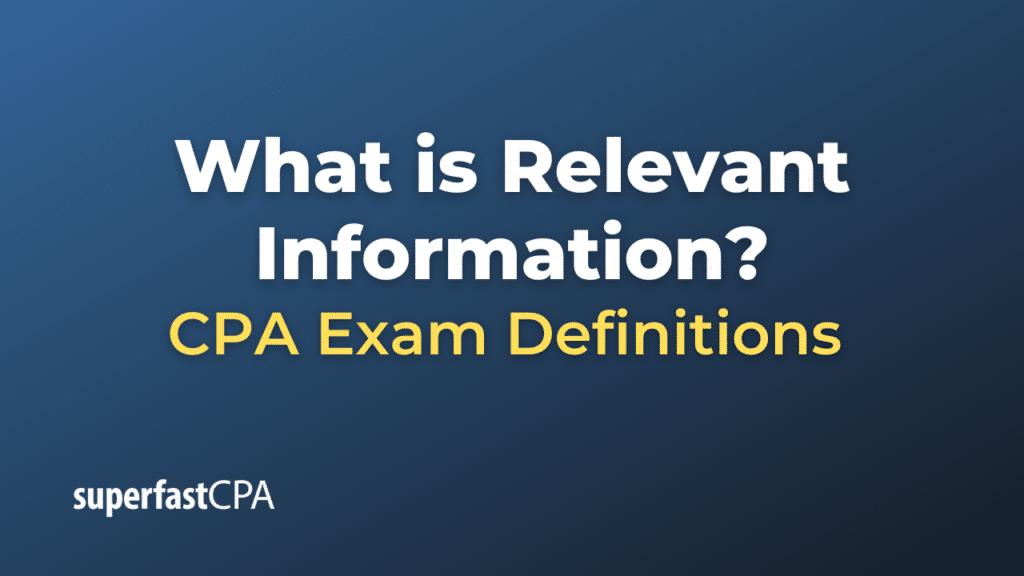Relevant Information
Relevant information refers to data that is pertinent, applicable, or crucial for a specific purpose, decision-making situation, or problem-solving process. In the context of decision-making, whether it’s in business, personal life, or any other scenario, relevant information can influence the outcome of a decision.
Two primary characteristics define relevant information:
- Timeliness: The information is available when needed and is current enough to impact the decision at hand. Outdated information might not be useful and can potentially lead to incorrect conclusions.
- Ability to Make a Difference: The information can change or influence a decision. If the data doesn’t provide any new insights or won’t impact the outcome, then it isn’t relevant.
It’s important to note that what’s considered relevant can be subjective and may vary based on the context or individual perspectives. What’s relevant in one scenario may not be in another.
Example of Relevant Information
Let’s look at a practical example that illustrates the concept of relevant information in a business decision-making context:
Background: Let’s consider a coffee shop, “Caffeine Hub,” located in City A. The owner, Mr. Smith, is contemplating opening a second branch in either City B or City C. He needs to decide which city would be a better choice for expansion.
Relevant Information:
- Market Research Data:
- City B: A recent survey shows that residents prefer local coffee shops over big chains and that there’s a growing demand for specialty coffee.
- City C: The market is saturated with several popular coffee chains, and a survey indicates residents are currently content with the available options.
- Rental Costs:
- City B: The average rent for a commercial space suitable for a coffee shop is $2,500/month.
- City C: The rent in prime locations averages $4,000/month, but spaces in less popular areas go for $2,000/month.
- Demographics:
- City B: The city is home to a large university, ensuring a consistent stream of young customers, which is the primary target market for Caffeine Hub.
- City C: The population is mainly older residents with a few schools, but no significant universities or colleges.
- Competition:
- City B: There are a few local coffee shops but no major chains.
- City C: There are several established coffee chains with loyal customer bases.
Non-Relevant Information:
- Mr. Smith’s childhood friend lives in City B.
- City C recently built a new public park.
- The Mayor of City B recently visited Europe.
Based on the relevant information:
- City B seems promising due to the positive market research data, reasonable rental costs, presence of a significant university, and limited competition.
- City C has higher rental costs in prime locations and a saturated coffee shop market. The demographic is also less aligned with Caffeine Hub’s target market.
The non-relevant information, like the personal connection Mr. Smith has with City B or the Mayor’s recent trip, doesn’t provide any meaningful insights for the business decision at hand.
From the relevant information presented, City B seems to be a more favorable choice for expansion. It’s essential to base such decisions on data and factors that directly influence the potential success of the business, and not on extraneous or emotional factors.
This example showcases the importance of identifying and focusing on relevant information when making informed decisions.













